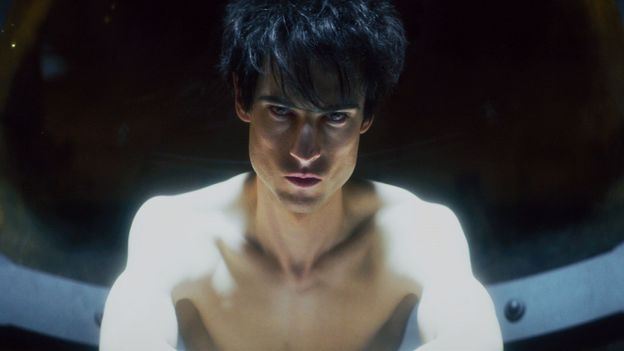
And I got to the end of the pitch and one head of Warner Bros turned to the other head of Warner Bros and he said, 'you know, we had lunch the other day to figure out what it was that made things like the Harry Potter and The Lord of the Rings films so successful, and we figured it out.
"Sandman needs time," says Gaiman, who was personally involved in developing the show.
"If somebody had ever tried to make a movie of Game of Thrones, that wouldn't have worked either.
First published by DC Comics in 1989, The Sandman is widely considered as one of the smartest, most challenging and imaginative comic books ever made.It is also a work that Gaiman himself is fiercely proud of. "I feel like Sandman is my legacy," he says, before going on to describe it as "my baby". As Gaiman would discover for himself, however, that is certainly not how Hollywood considered it. Instead, throughout the 90s and much of the early 21st century, The Sandman was viewed as less of a precious and unique child, and more as yet another superhero cash cow.."It all began in 1991," says Gaiman, "when I was sent to meet one of the executives at Warner Bros and she said, 'there's talk of a Sandman movie'. I say, 'please don't do it. I'm doing the comic and it would just be a distraction'. And she says, 'nobody has ever come into my office and asked me not to make a movie before'. And I said, 'well, I am'. Then she said 'Ok, we won't make a movie'. That lasted until about 1996," – the same year that Gaiman's original run of Sandman came to an end..Screenwriters Ted Elliott and Terry Rossio, who would go on to create Shrek and the Pirates of the Caribbean franchise, were hired to write one of the first drafts. The pair were huge admirers of the comics, and the script they delivered aimed to capture the essence of the source material, including a vignette set around the dreams of cats. "We were certain that we could convey the mood, intelligence, sensibilities and brilliance of Neil's work," Elliot once wrote on his blog Wordplay. But when the duo handed in their script, they were told that Warner Bros hated it so much that it was deemed "undeliverable", meaning that they would be denied their fee..And he only had one idea, which was a giant mechanical spider." Like The Sandman, Tim Burton's proposed Superman Lives, which would have starred Nicolas Cage, went through its own version of development hell.
He told Warner Bros that "they were throwing out a diamond," according to Elliott, and suddenly the movie was on "the fast-track with a director attached".
According to Gaiman, this was because Roger Avary had "made the mistake" of showing Warner Bros executives the surrealist 1988 stop-motion movie Alice, from Czech director Jan Švankmajer, as an example of how he wanted the movie's dream sequences to feel.
But look and feel wasn't the worrisome issue with me; it was that Jon Peters wanted the Sandman in tights beating the life out of the Corinthian (on page 1).
When I brought up the fact that the Sandman would never raise his fist like a brute… I was asked if I wanted to make the movie or not.".
"It was a terrific script by Jack Thorne," says Gaiman, "and Joe had planned to play the Corinthian." That attempt failed to get off the ground because The Sandman, along with other DC Comics properties, was moved to Warner Bros subsidiary New Line Cinema.
"New Line wanted to make fast and furious action films," explains Gaiman, "and they explained that philosophy to Joseph Gordon-Levitt and Joe jumped ship.The fact that Sandman can now be made as a largely faithful TV show says a lot about how much the medium has changed."At no point in the development of any of those other [Sandman] projects was Neil invited into the process," says the show's co-showrunner Allan Heinberg."And when the last round of Sandman films ran aground, David Goyer, who was a producer on them, went to Warner Bros and basically said, 'it's time to bring Neil Gaiman into the project and make him a producer and have him supervise the entire thing.
"We saw people of every nationality, of every race, basically any actor with good cheekbones," says Gaiman, "but by the end it was still Tom.
The first series of Netflix's Sandman adapts the first two volumes – numbering 16 issues – of the comic books, Preludes and Nocturnes and The Doll's House?"We didn't have a narrator leading you through it [like in the comic]," says Heinberg
For Gaiman himself, revisiting The Sandman after so many years has been a strange, "fascinating" experienceWith that in mind, he also aimed to make the comics as inclusive as possible, with the stories exploring different cultures and mythologies, as well as being ahead of their time in terms of gay and transgender characters
"When I was doing the comic," says Gaiman, "I was getting flack for the fact that Sandman didn't have politics in it
As though to crown his point, and to illustrate how much the definition of "political" has changed, Gaiman says that he has recently been attacked by, in his words, "idiots" for making Sandman that most nebulous of things: "woke"I was terrified that somebody would phone up and say, 'Ok, good news, Arnold Schwarzenegger is the Sandman!' And it would just be like, 'oh no, this is the worst